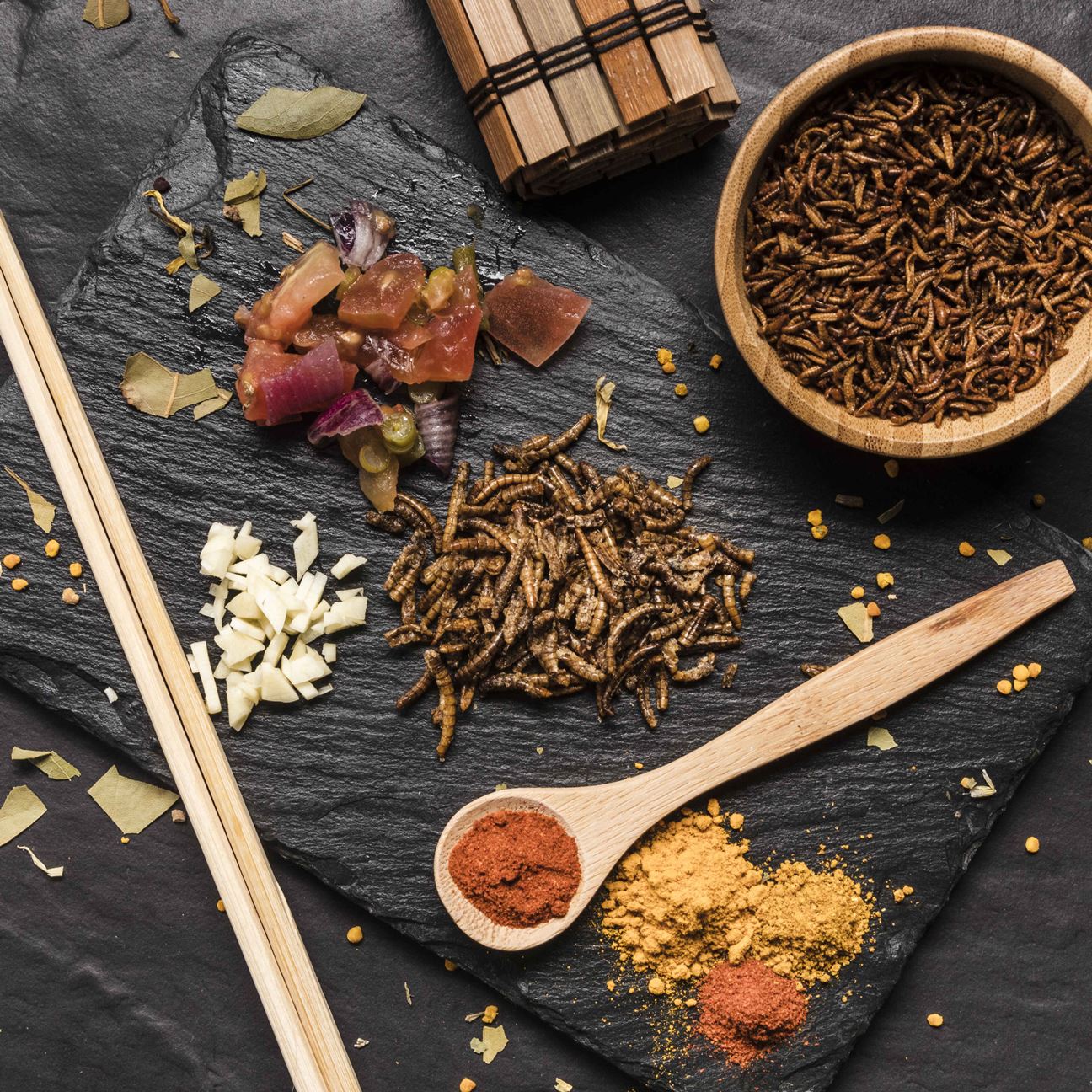As the debate on meat eating continues, another alternative has cropped up - Entomophagy. Here's a glimpse into why some people consider insect-eating a good alternative to meat.
Entomophagy
(noun)
The practice of eating insects,
parts of insects, pupae or larvae
Gross? No, not really. If you think about it practically, eating animal flesh is just as gross — and while we’re thinking practically, insect-eating is one of the most practical, easy, environment and resource-friendly ways of consuming protein and other essential nutrients.
 Pickled or deep-fried crickets, grasshoppers and locusts are considered a snack in various cultures
Pickled or deep-fried crickets, grasshoppers and locusts are considered a snack in various cultures
Did you know that over three-thousand ethnic groups all over the world have been eating insects, pupae and larvae for centuries now? It makes perfect sense - they’re everywhere; they don’t need many resources to survive; they are very rich in protein, fats and essential nutrients, and they can be delicious and versatile to cook with (this article will later provide a recipe using insect protein as proof). This, of course, is true mainly for tropical countries. The tropical environmental conditions support a large range of insects and they make up most of the animal biomass in the tropics. Thus, places like South and East Asia, Africa and South America - all have parts of their food culture that involve insects. Incidentally, these are also the regions that have been colonised by non-tropical countries and have had their cultures erased or stigmatised, which is why in this day and age, even for tropical countries, insect-eating is a generally gross concept.
 Ground-up mealworms and spices can be used to make spreads and chutneys and are actually very rich in proteins and fats
Ground-up mealworms and spices can be used to make spreads and chutneys and are actually very rich in proteins and fats
Statistically, entomophagy will require less space, water, and resources to produce the same amount of protein mass than other forms of meat. We clear forests for cattle grazing, we farm invasive and destructive plants like soy to feed these cattle, we require large amounts of space to rear cattle and poultry — the list is endless. In insect farming, we require only a fraction of these resources- less space, fewer food requirements, and less water among others. Insects also have fast regeneration rates, and their populations can grow rapidly- the efficiency of this is inarguable. However, this may be one of our only largely environmentally sustainable options and in 2019, sustainability in these environmentally damaged times is a step in the right direction.
Since the demand for entomophagy globally is very less, entomo-farms, at least on a large scale are not a thing of the present. However, various countries, especially in Asia, have specialised in edible insect products. If you are grossed out by the idea of eating a whole insect, various forms of insect flour, too, are used in everyday cooking. Since entomophagy is now more widely recognised as a sustainable source of protein, cricket flour, locust flour, scorpion flour and more are just some common products in this marketplace. They can be used as a substitute for regular flour, or in your daily protein shake- and can be extremely healthy.
 Cricket flour is made under hygienic conditions, where the crickets are usually fed a diet of vegetables, and then pressure cooked and powdered
Cricket flour is made under hygienic conditions, where the crickets are usually fed a diet of vegetables, and then pressure cooked and powdered
Insect products can be found very easily online on various platforms. There are various blogs dedicated to it that compare products and recipes. There is also a large Pinterest tag with insect-protein recipes having some rather delicious content. In recent years, there have been various cookbooks published with different entomophagy recipes.
Listed below is a (tried and tested and delicious) banana bread recipe using cricket flour.
Soft, Protein-Rich Cricket-Banana-Bread Recipe
This recipe is just like normal banana bread but with a lot of extra natural protein. Crickets have 2 times the amount of protein than the same amount of beef along with all the essential vitamin and minerals. By consuming this product, you can cut down on your meat consumption and maintain your macro-nutrients in the process. This recipe uses Thailand Unique’s 100% Cricket Powder.

Method:
1) Preheat the oven to 175º C
2) Mix all the ingredients in a big bowl until just combined (take care not to over-mix!)
3) Line a bread-pan with melted butter and pour in the banana bread mixture.
4) Bake at 175º C for 35-50 minutes, or until an inserted toothpick comes out clean.
This recipe is perfect for an entomophagy beginner. While increasing your healthy protein intake, one can be less environmentally damaging at the same time. Understandably, the concept is gross, or just not for everyone. However, we may have to turn to insect-nutrients in the next 50-100 years to reduce environmental impact, so we probably need to start warming up to the concept!